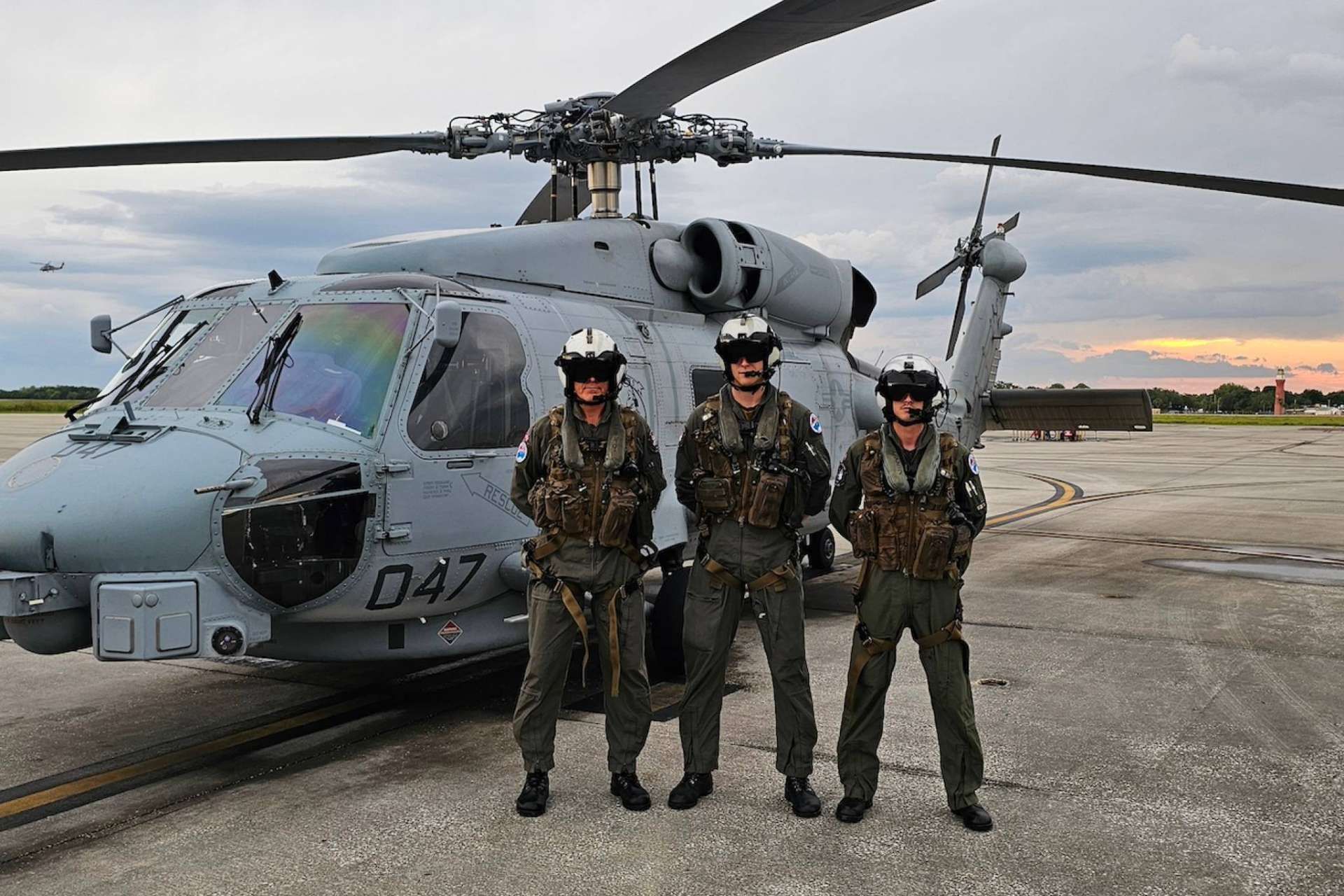Breaking News
First Royal Norwegian Air Force Pilots Complete MH-60R Seahawk Helicopter Training in US.
On August 5, 2024, the Norwegian military announced that the first pilots of the Royal Norwegian Air Force have completed their training on the MH-60R Seahawk helicopters in the United States after more than nine months of instruction provided by the U.S. Navy. This milestone marks an important step in replacing the problematic European NH90 helicopters, a decision made by the Norwegian Ministry of Defense (Forsvaret) less than a year ago.
Follow Army Recognition on Google News at this link

MH-60R Seahawk helicopters with pilots from the Royal Norwegian Air Force (Picture source: Royal Norwegian Air Force)
It is important to note that the pilots underwent many hours of classroom training and simulations, starting their training on the UH-60 Black Hawk platform. This approach is justified by the fact that the MH-60R Seahawk are more sophisticated derivatives of the UH-60, adapted for naval operations, according to the official Forsvaret statement.
The three trained pilots are destined to operate the MH-60R Seahawk, but the first units will serve within the Norwegian Coast Guard. Lieutenant Colonel Jann Olav Lande, one of the certified pilots, specified that the training focused largely on the use of weapon systems, sensors, and equipment for anti-surface warfare, anti-submarine warfare, and search and rescue operations.
Simultaneously, other members of the Norwegian forces were training on the P-8 Poseidon platform, with three pilots also certified for this type of aircraft. In total, these training sessions mobilized thirty Norwegian military personnel in the United States.
The MH-60R Seahawk helicopter brings revolutionary anti-submarine warfare (ASW) and anti-surface warfare (ASuW) capabilities to navies around the world. Designed to U.S. Navy specifications, the aircraft, nicknamed 'Romeo', is robust, powerful, and reliable, capable of operating from land or ship, allowing operators to successfully complete their missions and return safely. The MH-60R benefits from four decades of experience and knowledge gained from the SEAHAWK program. It is equipped with advanced digital sensors, including a multi-mode radar, electronic support measures system, electro-optical/infrared camera, data links, aircraft survivability systems, dipping sonar, and sonobuoys. Its integrated mission system processes sensor data to create a comprehensive situational picture of the surface and undersea domains. With this actionable intelligence, the crew can effectively and efficiently track, target, and engage ships or submarines. The armament includes torpedoes, air-to-ground missiles and rockets, as well as crew-served weapons.
Military relations between Norway and the United States date back to the aftermath of World War II and have evolved from a policy of neutrality to a strategy of collective defense through NATO and bilateral support from the United States. Norway's strategic position as the only NATO member bordering the Soviet Union enhanced its role on NATO's "northern flank," influencing U.S. and NATO strategies against Soviet threats, notably by deploying aircraft carriers in Norwegian fjords to counter military installations on the Kola Peninsula.
Norway's investments in U.S.-dependent force structures, such as the Skjold class missile boats and the F-35 stealth fighters, underscore the importance of this bilateral relationship for Norwegian national security.
The MH-60R Seahawk, designed and manufactured by Sikorsky Aircraft Corporation and Lockheed Martin Systems in the United States, serves in various missions, including anti-submarine warfare, anti-surface warfare, surveillance, communications relay, naval gunfire support, and logistics support. Introduced in 2009, this helicopter replaces the fleet's legacy SH-60B and SH-60F models and becomes a cornerstone of naval helicopter operations.
The MH-60R measures 19.76 meters in length, with a main rotor diameter of 16.35 meters and stands 5.1 meters tall. It has a maximum takeoff weight of 10.68 tonnes and is powered by two General Electric T700-GE-401C turboshaft engines. It reaches a maximum speed of 267 km/h, and has a flight endurance of 3 hours and 30 minutes, with an internal payload capacity of 1.8 tonnes and an external capacity of 2.7 tonnes. It can be armed with a 7.62 mm or 12.7 mm machine gun and carry AGM-119B Penguin anti-ship missiles or AGM-114 Hellfire air-to-surface missiles, as well as Mk.46, Mk.50, or Mk.54 torpedoes.


























